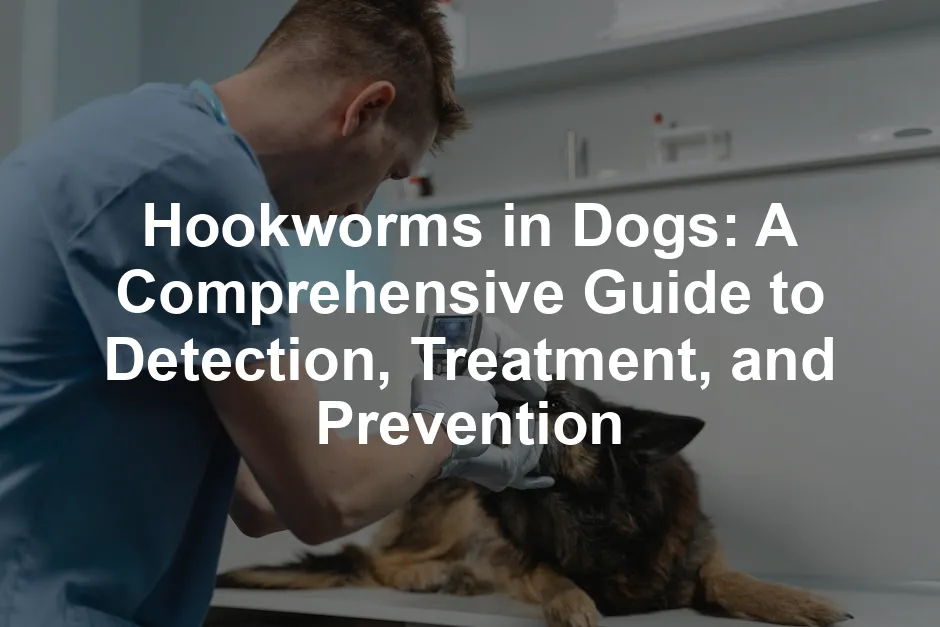Introduction
Hookworms in dogs are not just a nuisance; they’re a serious health threat that can lead to severe complications, especially in puppies. Imagine tiny parasites with a penchant for blood, lurking in your furry friend’s intestines. If you’re a dog owner, understanding these hookworms’ insidious nature is crucial not only for your pet’s health but also for your own.
These parasites, specifically Ancylostoma caninum, Ancylostoma braziliense, and Uncinaria stenocephala, are notorious for their ability to attach to the intestinal wall. With their hook-like mouthparts, they feast on your dog’s blood, leading to anemia and other nasty issues. While you might think your pup is just having a bad day, it could be the result of these sneaky invaders.
Hookworms thrive in warm, moist environments. They often find their way into your dog’s system through contaminated soil or feces. It’s like they have a VIP ticket to your backyard! And let’s not forget the little ones—puppies are especially vulnerable due to their developing immune systems. Understanding the lifecycle of these pesky parasites is crucial.
In this article, we’ll decode everything you need to know about hookworms in dogs: their lifecycle, symptoms, treatment options, and preventive measures. We’ll also discuss how these critters can impact humans. So, grab a cup of coffee, and let’s jump into the world of these tiny terrors!
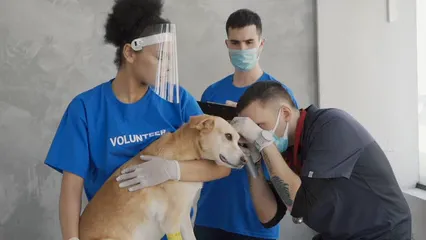
Summary of Key Points
– What are Hookworms?: Understanding these parasites, including their species and anatomical features.
– How Dogs Get Hookworms: Various transmission routes, including skin penetration and ingestion.
– Lifecycle of Hookworms: Detailed explanation of the three stages: egg, larvae, and adult.
– Symptoms of Hookworm Infection: Common signs and what to look out for in your dog.
– Diagnosis of Hookworms: The importance of fecal tests and their limitations.
– Treatment Options: Overview of effective anthelmintic drugs and supportive care.
– Human Infection Risks: How hookworms can affect humans and preventive measures.
– Prevention Strategies: Key practices for keeping your dog and environment free of hookworms.
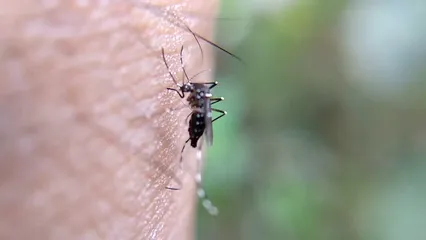
What Are Hookworms?
Definition and Species
Hookworms are sneaky little parasites that can wreak havoc on your dog’s health. The main culprits are Ancylostoma caninum, Ancylostoma braziliense, and Uncinaria stenocephala. These pests are generally tiny, measuring about 1/4 to 3/4 of an inch long. Their hook-like mouthparts allow them to latch onto the intestinal wall of your furry friend, making them quite the bloodsuckers!
Once attached, they feast on your dog’s blood, leading to internal blood loss. It’s as if they’re throwing an uninvited party in your dog’s intestines. While you might not see them with the naked eye, their impact can be significant. Hookworms can ingest large quantities of blood, leading to serious issues like anemia, particularly in puppies and dogs with weakened immune systems.
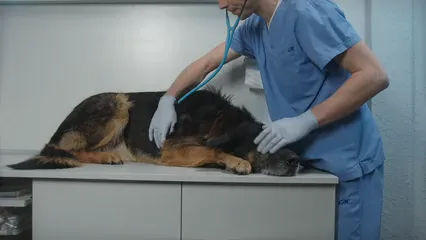
To keep your dog safe from these invisible invaders, consider investing in a dog health care book. This book can provide you with all the essential knowledge about recognizing symptoms and understanding the importance of regular check-ups.
Health Risks
The health risks posed by hookworms are no laughing matter. These parasites can cause substantial blood loss, which can quickly spiral into anemia. Symptoms of anemia include weakness, lethargy, and pale gums. In severe cases, untreated hookworm infections can be fatal, especially for puppies. With their developing immune systems, puppies are particularly vulnerable to the bloodsucking habits of these parasites.
Additionally, chronic hookworm infections can lead to gastrointestinal upset, weight loss, and a general decline in health. If your dog is showing signs of fatigue or unusual behavior, it might not just be a case of the blues; hookworms could be the culprits. Regular veterinary check-ups and fecal tests are vital for early detection and treatment.
By understanding what hookworms are and the health risks they pose, you can keep your canine companion safe and sound. And while you’re at it, why not grab some dog first aid kit? It’s always good to be prepared for any emergencies that might come your way!
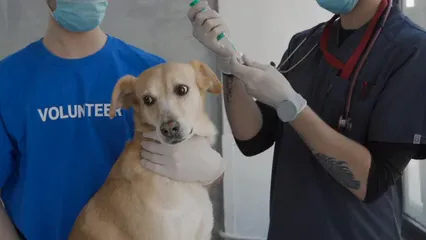
How Do Dogs Get Hookworms?
Modes of Transmission
Hookworms are masters of sneakiness and can enter your dog’s system through several routes. One common method is through skin penetration. Hookworm larvae can burrow into your dog’s skin, usually through the paws or belly. Yes, those cute little paws could be a gateway for these pesky invaders!
Another route is ingestion. Dogs can unwittingly swallow larvae while grooming themselves or sniffing contaminated soil and feces. It’s like a buffet of parasites when they roll around in the dirt!
Don’t forget about puppies. They can be infected in utero via the mother’s placenta or through nursing from an infected mother. This means that even the tiniest and most innocent canines can fall victim to these worms right from the start.
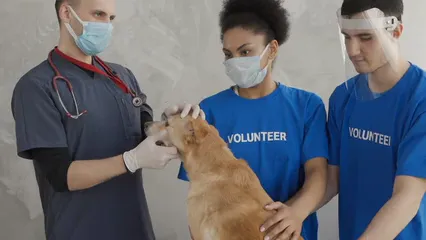
Environmental Factors
Environmental conditions play a significant role in hookworm transmission. Poor sanitation and overcrowded living conditions are like red carpets for these parasites. If your dog has access to contaminated areas, such as parks where other infected dogs have been, the risk of infection increases dramatically.
Keeping your dog’s environment clean and ensuring they don’t roam in potentially contaminated areas is essential for prevention. Regularly cleaning up after your dog and practicing good hygiene can help keep these pesky parasites at bay. Remember, a clean dog is a happy dog!
Speaking of cleanliness, don’t forget to stock up on dog waste disposal bags. They are essential for keeping your environment clean and preventing the spread of parasites!
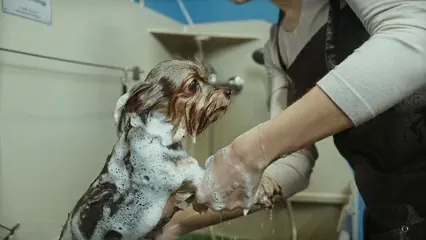
Lifecycle of Hookworms
Stages of Development
Understanding the lifecycle of hookworms is vital for effective prevention and treatment. Hookworms go through three distinct stages: egg, larvae, and adult.
First, let’s talk about the egg stage. Female hookworms lay microscopic eggs inside an infected dog’s intestines. These eggs are then expelled in the dog’s feces, contaminating the environment. Each female can produce thousands of eggs daily. It’s like they’re throwing a party, and everyone is invited—except your dog!
Next comes the larvae stage. When the eggs hatch, they develop into larvae, which can survive in soil for weeks or even months. The larvae are particularly resilient, thriving in warm, moist environments. This is why hookworms are often found in areas with poor sanitation or overcrowded conditions. If your dog has been frolicking in the dirt or grass, they might just be stepping on the very larvae that could lead to an infection. Yikes!
Finally, we have the adult stage. Once the larvae penetrate a dog’s skin or are ingested, they migrate to the intestines. Here, they mature into adults, attach to the intestinal wall, and begin to feed on the dog’s blood. The cycle restarts as these adults produce more eggs, creating a continuous loop of infection.
Understanding these stages helps dog owners recognize how hookworms can persist in the environment, emphasizing the importance of maintaining a clean and safe space for your furry friend.
Symptoms of Hookworm Infection in Dogs
Common Clinical Signs
Hookworm infections can be sneaky, often hiding behind seemingly harmless symptoms. However, knowing what to look for can save your dog from serious health issues.
The first symptom is often gastrointestinal upset. Your dog may experience diarrhea or vomiting, which can be distressing for both of you. Pay attention to the consistency and color of their stools. If they are black and tarry, it could indicate blood loss from hookworms.
Next, look for signs of anemia. This can manifest as pale gums, lethargy, and weakness. If your dog seems unusually tired or is not playing as much, it’s time to investigate. Anemia can be particularly dangerous for puppies, who are more susceptible to severe health consequences.
Lastly, keep an eye out for skin irritations. Hookworms can cause itching, especially around the paws. You might notice your dog scratching more than usual or licking their feet obsessively.
Detecting these symptoms early is crucial, especially in puppies. Their immune systems are still developing, making them more vulnerable to severe infections. If you notice any of these signs, reaching out to your vet promptly can make all the difference.

For added peace of mind, consider a dog health care book to help you identify these signs and understand how to act swiftly.
Diagnosis of Hookworms
Diagnostic Methods
Diagnosing hookworm infections typically involves a straightforward fecal flotation test. Your veterinarian will mix a fresh stool sample with a special solution. This process allows any hookworm eggs present to float to the top for easy identification.
However, timing is essential. It can take two to three weeks for the larvae to mature and start producing eggs after infection. This delay can make diagnosing young puppies particularly tricky. If you suspect an infection in a puppy, it may require multiple tests to confirm.
Challenges arise because not all infected dogs show symptoms, and some may not have produced eggs yet. Regular fecal testing, especially in puppies, is key to catching these infections early. Remember, staying proactive can help keep your dog healthy and happy!

To ensure your dog is always ready for a vet visit, consider having a dog travel carrier handy. It makes trips to the vet much easier!

Treatment Options for Hookworms
Anthelmintics and Supportive Care
Dealing with hookworms in dogs is not just about scaring them away; it’s about arming them with the right medications and supportive care. The primary weapons in our arsenal against these pesky parasites are anthelmintics. These drugs are like superhero sidekicks for your furry friend, swooping in to save the day!
Two of the most commonly used anthelmintics are Fenbendazole and Pyrantel. Fenbendazole is effective against adult hookworms and can also tackle a variety of other intestinal parasites. It’s typically administered orally and is known for its minimal side effects. Pyrantel is another great option, often used for puppies because of its safety profile. It works by paralyzing the hookworms, allowing them to be expelled from the dog’s system.
However, one round of treatment is rarely enough. Hookworms lay thousands of eggs, and it’s crucial to repeat the treatment in two to three weeks. This follow-up ensures that any new adult worms that developed from existing larvae are eliminated. Think of it as a two-part series—tune in for the thrilling conclusion!
In severe cases where a dog suffers from significant blood loss, additional supportive care may be necessary. This could mean a blood transfusion to help restore those missing red blood cells. Yes, you heard right! Your pup might need a little extra love and care from the vet’s office to bounce back. Depending on the situation, your veterinarian might also recommend high-protein diets or iron supplements to aid recovery. After all, we want our dogs back to their playful selves, running around like the carefree companions they are.
Regular follow-ups with your vet are crucial after treatment. Monitoring your dog’s recovery allows for any adjustments in care, ensuring they’re on the right path to health. So don’t skip those vet appointments; they can make all the difference!
And while you’re considering follow-ups, don’t forget to treat your pup to some dog vitamin supplements to boost their recovery!

Can Hookworms Infect Humans?
Zoonotic Risks
Now, let’s address an important question that might have crossed your mind: Can hookworms infect humans? The answer is yes, but don’t panic just yet! While adult hookworms have a soft spot for dog intestines, their larvae can cause a bit of a ruckus when they come into contact with human skin.
When humans walk barefoot in contaminated areas, hookworm larvae can burrow into the skin, leading to an itchy condition known as ground itch. It’s like having a tiny party of larvae under your skin—definitely not the kind of gathering we want! While it may sound alarming, this condition is usually self-limiting and can be treated with topical medications.
However, there’s a more serious risk associated with hookworm larvae. In rare cases, they can migrate through the body, causing damage to internal organs, including the eyes. This condition, known as visceral larval migrans, can lead to significant health issues, including blindness. Yikes!
Good hygiene practices are your best defense against these little invaders. Frequent handwashing, especially after handling your dog or cleaning up waste, can help reduce the risk of infection. Avoiding bare feet in potentially contaminated areas is also a smart move. Remember, prevention is key!

So, while hookworms can be a concern for both dogs and humans, staying informed and practicing good hygiene can keep everyone safe and sound. And if you happen to be traveling with your dog, consider a dog life jacket for those water adventures!

Prevention of Hookworm Infection
Effective Preventive Measures
When it comes to protecting your dog from hookworms, an ounce of prevention is worth a pound of cure. So, let’s roll up our sleeves and dive into effective preventive measures that keep these pesky parasites at bay!
First and foremost, establishing a routine deworming schedule for puppies is essential. Start deworming them at around two to three weeks of age and continue every two weeks until they’re about eight weeks old. This method ensures they’re protected right from the start. Don’t forget about nursing mothers! They should be dewormed alongside their puppies to prevent any dormant larvae from reactivating. It’s a family affair!
Maintaining a clean environment is another crucial step in prevention. Regularly clean up dog waste in your yard and avoid letting your dog roam in potentially contaminated areas. This practice is like putting up a “No Entry” sign for hookworms. When they can’t find a suitable home, they can’t wreak havoc on your pup’s health.
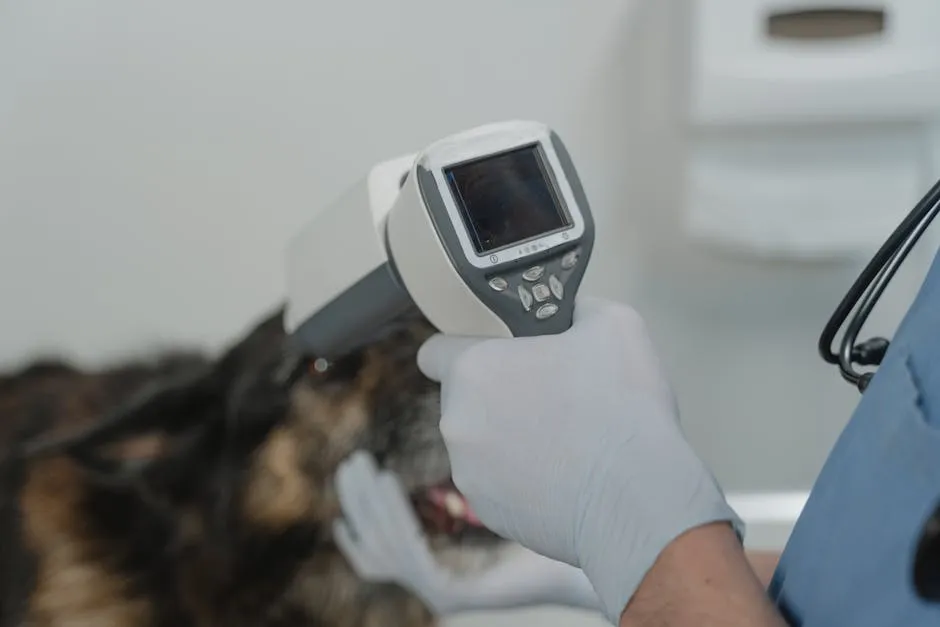
Regular veterinary check-ups also play a vital role in prevention. Routine fecal examinations should be conducted, especially during your dog’s first year. This proactive approach will help catch any potential hookworm infections early on, allowing for prompt treatment. Your vet can also recommend appropriate preventive medications, often found in heartworm prevention products, that tackle hookworms too.
Lastly, educate yourself and your family about hookworm transmission. Understanding how these parasites spread can empower you to take the necessary precautions. By staying vigilant and proactive, you can help ensure that your furry friend remains hookworm-free and bouncing with energy!
Incorporating these preventive measures into your dog’s care routine is a fantastic way to keep them safe from these sneaky parasites. After all, a little prevention goes a long way in maintaining your dog’s health and happiness. And while you’re at it, consider a dog grooming kit to keep your pup looking sharp!

Conclusion
In summary, hookworms are more than just unwanted guests in your dog’s intestines; they can pose serious health risks. These intestinal parasites, primarily Ancylostoma caninum, Ancylostoma braziliense, and Uncinaria stenocephala, latch onto your dog’s intestinal wall and feast on their blood. This can lead to anemia, weight loss, and even death, particularly in young puppies.
As a responsible dog owner, staying vigilant and proactive is essential. Regular veterinary check-ups, including fecal tests, are crucial for early detection. Maintaining a clean environment is equally important. Clean up after your dog promptly and avoid letting them roam in potentially contaminated areas.
If you suspect your dog has hookworms, don’t wait for symptoms to worsen. Seek veterinary advice immediately. Your vet can provide tailored treatment plans, including medications and supportive care, to help your furry friend recover from this pesky infection.
Remember, protecting your dog from hookworms is a shared responsibility. Educate yourself and your family about the risks and preventive measures. With vigilance, you can keep your canine companion safe and healthy. After all, a happy pup means a happy household! And hey, don’t forget to check out a dog agility training equipment for some fun exercise together!
FAQs
Can hookworms kill dogs?
Yes, hookworms can be fatal, especially for puppies and dogs with weakened immune systems. Untreated infections lead to severe anemia, which can be life-threatening.
How do I know if my dog has hookworms?
Look for signs like diarrhea, vomiting, weakness, and pale gums. A fecal test from your veterinarian is the best way to confirm hookworm infection.
What should I do if I suspect my dog has hookworms?
Contact your veterinarian immediately for a diagnosis and treatment plan. Early intervention is crucial for a successful recovery.
Can I see hookworms in my dog’s poop?
Hookworms are often not visible in feces. While they may appear as thin strings, fecal tests are necessary to confirm their presence.
What are the best prevention methods for hookworms?
Regular deworming of puppies, maintaining a clean environment, and practicing good hygiene are key prevention strategies. Consult your vet for appropriate parasite prevention products.
To help manage joint pain and arthritis in dogs, consider exploring the best supplements for dogs with joint pain and arthritis.
Please let us know what you think about our content by leaving a comment down below!
Thank you for reading till here 🙂
All images from Pexels

